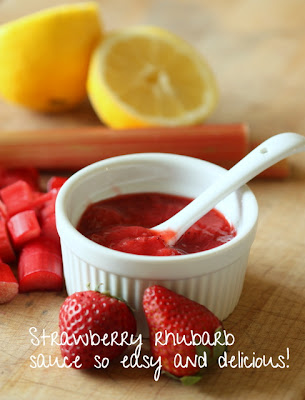I know I've mentioned before that my father side of the family is Pennsylvania Dutch Mennonite. Although I'm not a practicing Mennonite and wasn't raised as one, most of the rest of my father's side of the family are still Mennonite. Because of this the Mennonite culture has had a huge impact on who I am. Much of the culture in just ingrained in my soul. Especially when it come to food and feeding people. It's nearly impossible for me to cook for less than six people, no matter how hard I try. I also inherited my inability to dance or play sports from the Mennonite side of my family, but that's another story. Back to the food stuff, Mennonites (at least the one I know) have a love affair with gravies, sauces, relishes, etc. Gravy is so sacred in my family, it's practically its own food group. I don't remember not knowing how to make gravy. Then there's applesauce. Also nearly a food group. Applesauce is more or less a condiment in my family. It was almost always on my grandmother's table. As a child, I thought everyone dipped their potato chips in applesauce or poured it on top of their coffee cake. So not surprisingly, I too love a good sauce.
Anyway, both my grandmother and my mother, who is not Mennonite but cooks like one, instilled the love of rhubarb in me at a very young age. I look forward with great anticipation to the arrival of rhubarb every spring. Even if you think you don't care for rhubarb, I'm telling you this sauce will change your mind! It's amazing on ice cream, mixed into plain yogurt, poured over a slice of pound cake, smeared on hot buttered pancakes... Hungry yet? Strawberry Rhubarb Sauce
(Printable Recipe)
Ingredients:
1/3 to 1/2 cup sugar, depending on desired sweetness
1/3 cup water
1 pound rhubarb stalks, diced
1 quart strawberries, cleaned, hulled and sliced
1/2 tablespoon lemon juice
Method:
In a heavy saucepan over medium heat combine sugar and water. Stir to dissolve sugar. Add rhubarb and allow to simmer for 15 minutes or until very tender. Add strawberries and lemon juice and simmer for 10 minutes more. Allow mixture to cool slightly before serving. It's great served warm or cold.
 |
| The perfect balance of sweet and tart! |























